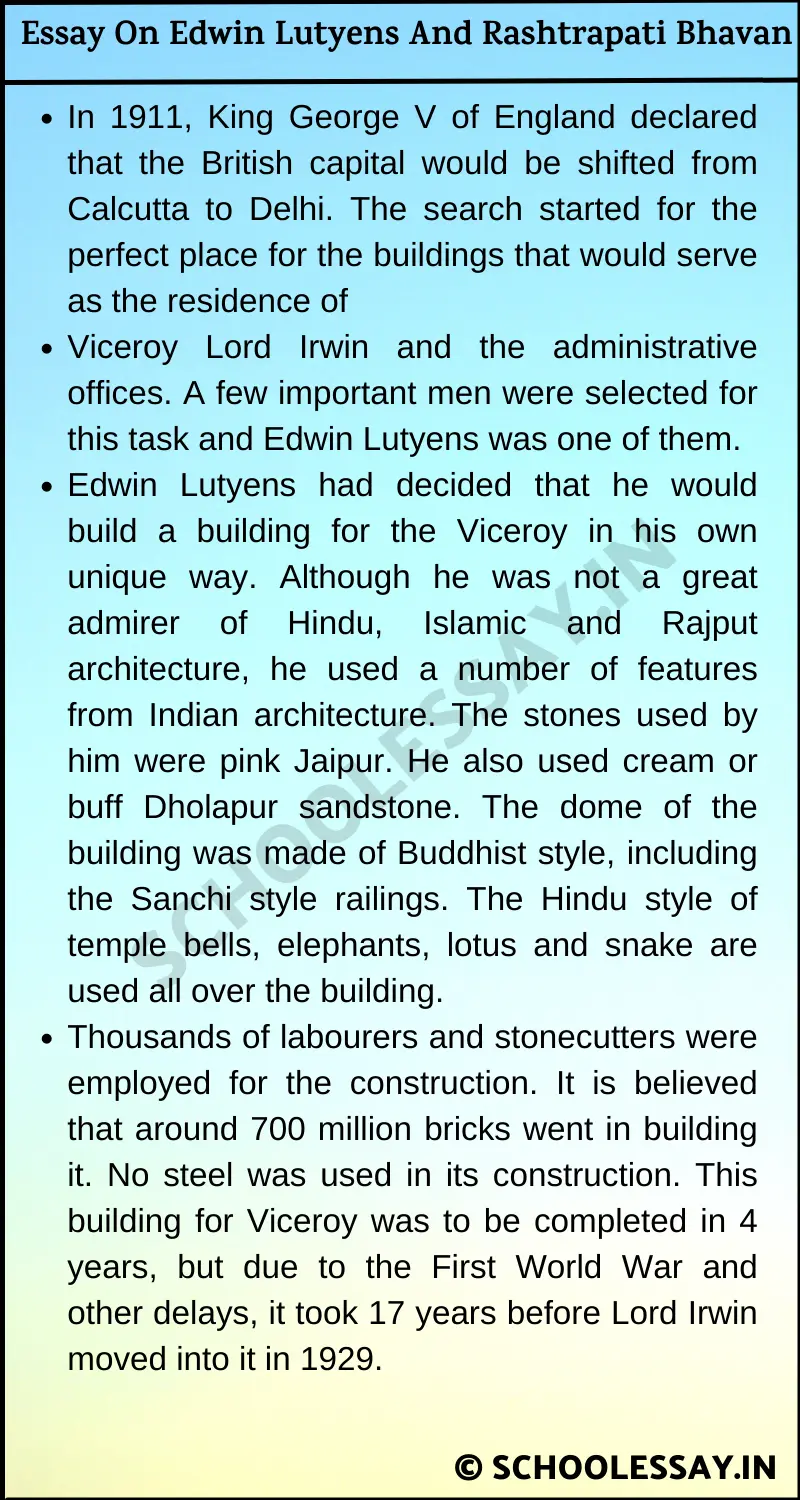Essay On Edwin Lutyens And Rashtrapati Bhavan
In 1911, King George V of England declared that the British capital would be shifted from Calcutta to Delhi. The search started for the perfect place for the buildings that would serve as the residence of
Viceroy Lord Irwin and the administrative offices. A few important men were selected for this task and Edwin Lutyens was one of them.
Edwin Lutyens had decided that he would build a building for the Viceroy in his own unique way. Although he was not a great admirer of Hindu, Islamic and Rajput architecture, he used a number of features from Indian architecture. The stones used by him were pink Jaipur. He also used cream or buff Dholapur sandstone. The dome of the building was made of Buddhist style, including the Sanchi style railings. The Hindu style of temple bells, elephants, lotus and snake are used all over the building.
Thousands of labourers and stonecutters were employed for the construction. It is believed that around 700 million bricks went in building it. No steel was used in its construction. This building for Viceroy was to be completed in 4 years, but due to the First World War and other delays, it took 17 years before Lord Irwin moved into it in 1929.
After India became independent in 1947, the building became the Rashtrapati Bhavan or the house of the Indian President. This glorious building has 4 floors and 340 rooms of different sizes. It takes nearly three hours while taking a walk inside the building. One of the main rooms includes the Durbar Hall where awards and military honours are presented. Many important decisions like the Partition of India are taken in the Council Hall. The Toshakhana or the Hall of Gifts displays articles presented to the Presidents on their travel abroad and within the country.
A huge dining room can accommodate 104 people. Visiting Heads of other countries are housed in suites called ‘Nalanda’ and ‘Dwaraka’. The Rashtrapati Bhavan is believed to be the biggest residence of any Head of the State in the world.
Lutyens garden laid out of the Rashtrapati Bhavan is a contribution of Indian and European styles. The design of the garden and the idea of canals and fountains in it was Mughal in origin. Every year this garden is open to the public in the months of February and March. It is estimated that nearly two lack people visit the garden during this time. The garden comprises more than 250 varieties of roses and more than 60 types of climbing plants with red, purple, pink and white flowers. The 600 varieties of trees here attract numerous peacocks and other birds.

ALSO READ:
- Essay On Educational Value of Travelling
- Essay On Education of Woman and Her Position
- Essay On Effect of Poverty on Character
- Essay On Education And Its Aims
- Essay On Habits
- Essay On Gambling
- Essay On The Uses of Electricity
- Essay On The Blessings of Peace
- Essay On The Horrors of War
- Essay On We Live In Deeds not In Years


